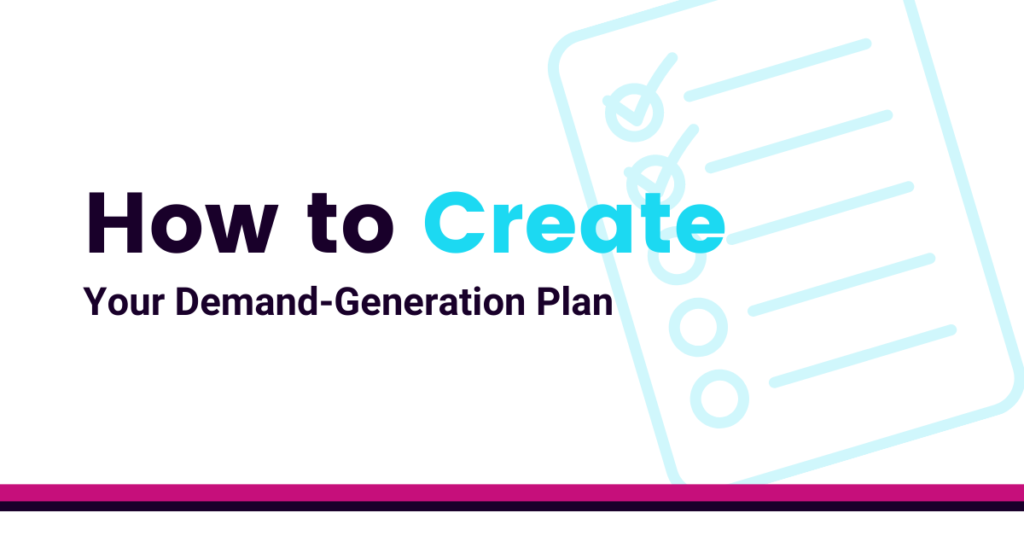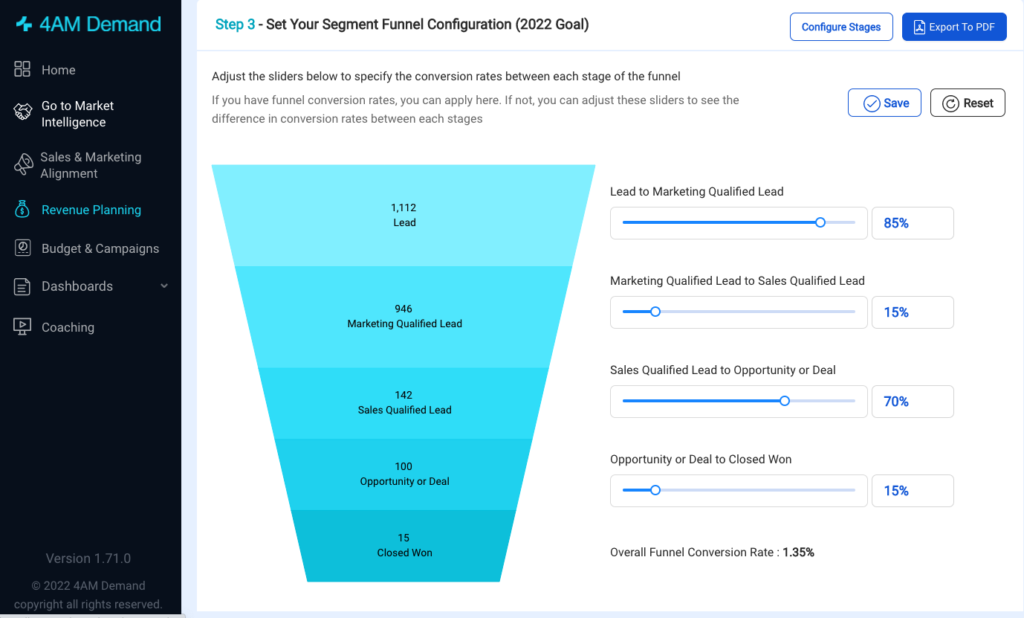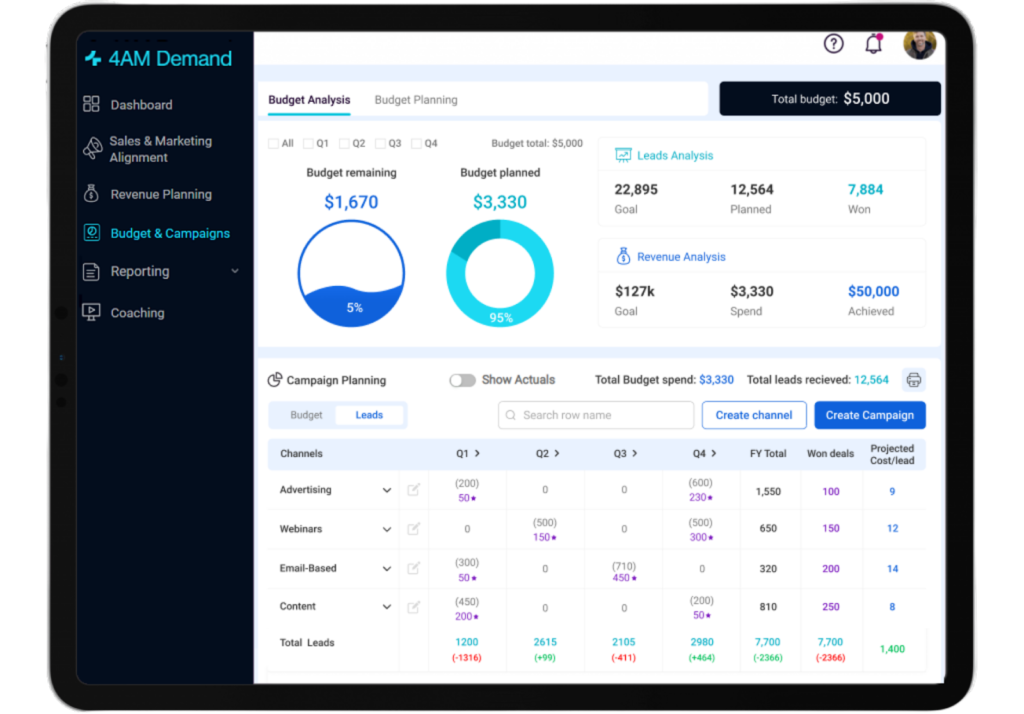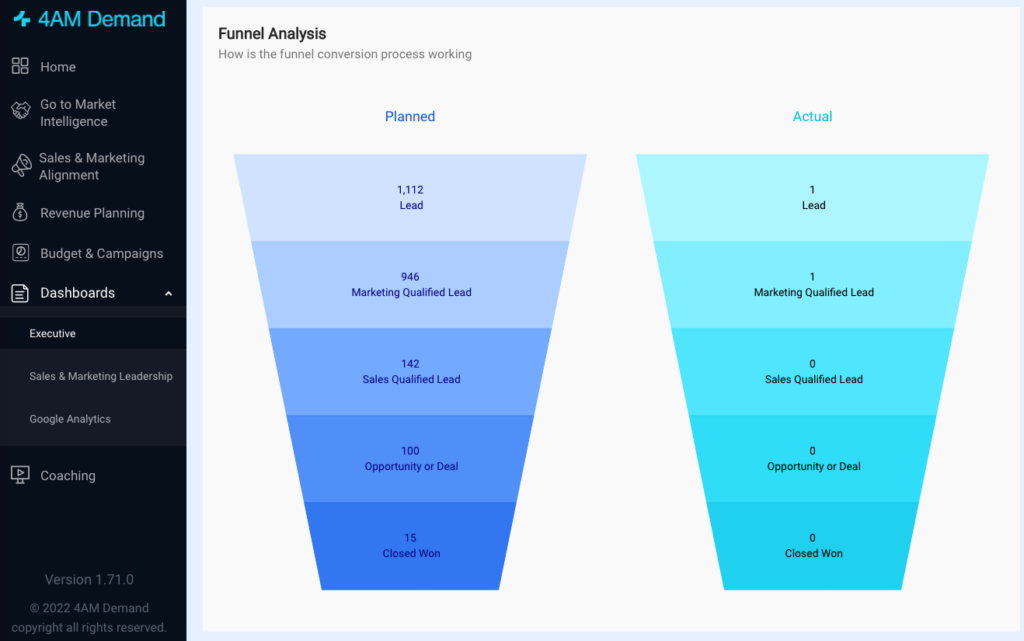

Demand-Generation: Where Do You Start?
If you know me, you know just how much I appreciate a great marketing plan, especially one built with demand generation at its core. There’s nothing like a good strategy session to review all the well laid plans, with hope and optimism abundant. Last week, Shandra Gemmiti took us through some foundational elements, that while on the surface may not seem as exciting to some as executing programs and acquiring leads, they are critical to ensuring that you get the most out of your demand-generation budget.
In short – she distilled it down to 3 things: market, message and content:
- Market: Who is your target customer, what are their problems and how do you solve them?
- Message: How do you talk about your company, product or service and what value you bring?
- Content: How do you bring that message through to your website, SEO strategy, and content?
Assuming you have these core pieces in place, and you have implemented your Martech stack (CRM / marketing automation at a minimum) effectively, and yes, I realize that’s a rather large assumption because neither is easy, you’re ready to create your demand-generation plan.
So, where (and when) do you start? Ahh, the $Xm question, depending of course on your most recent raise. No matter the case, below we’ll outline the where but as for the when, you may already be late to that party. In an ideal world you’d be doing this a few months before the start of the year. Going from the generation of a lead to a closed won deal takes time, years in some cases. If you expect to achieve revenue in Q1, you’ll be relying on programs you ran the previous year. For that reason, it’s never too early to start the process of demand generation.
1. Define Your Lead Goals
Fundamental to going out and generating leads is first understanding how many you need in order to hit marketing’s contribution to the revenue goal. You can achieve this by figuring out your backwards waterfall, in other words – start at the bottom and work your way up.
Often, we get the revenue goal for the year from finance or the CEO. Take this number and first understand what % will come from net-new business, and in collaboration with sales determine how much of that net-new number marketing’s investment in programs will source vs. how much sales efforts will source. Other inputs you’ll need to understand:
What’s your average selling price (ASP)? ASP will help you understand how many net-new deals you need to deliver. Most SaaS organizations will have this as an MRR or ARR average. Use the one that’s consistent with your new business objectives.
What’s your average conversion rate at each stage of the funnel? Understanding conversion from lead to MQL, MQL to SQL, SQL to opportunity and opportunity to closed won will get you to how many leads you need to go get in order to hit that revenue goal. If you’ve been tracking these metrics you’ll be able to use your average conversion rates from previous years, but if you’re new to this you may need to use some estimates and tweak as you learn.
For 4AM customers, you can do this easily right in the 4AM platform (if you’re not a customer, try it now free!):

2. Set Your Budget
Budget conversations tend to happen one of two ways – your budget is handed to you and you have to figure out how to spend it to generate the number of leads you defined in step 1. Or, more generously, you’re asked how much you need to spend to hit the revenue goals. The reality is, it’s probably somewhere in between where you start with an ask (it’s okay to admit it’s padded, we all do it!), and you get back a trimmed down version.
Pro tip: If you’re just starting out and don’t have programs or leads from the year or quarter prior to help you in Q1, do what you can to front-load some of your budget to the early part of the year. The more momentum you can generate early, the better chance you have of impacting current year revenue goals.

3. Plan Your Program Mix
Once your budget is set, it’s time to plan your programs. Most teams do this quarterly as this allows them to continually refine the mix based on the metrics as they come in. Aim to do this at least 6-8 weeks ahead of the quarter, that way you can sign contracts, prep content, write abstracts, source speakers, etc. in advance.
Depending on your budget, it’s best to try to hit as many channels as you effectively can with your plan. At a minimum you want to ensure you are doing some paid digital, paid search, webinars, content promotion, email marketing and events. You may not do events every quarter given your industry event schedule, but ensuring you have an annual balance across programs is important.
Pro tip: If you’re using a vendor to do a program, try to hit multiple channels with that vendor. For example, a webinar, display advertising and content promotion with the same vendor will ensure their audience sees you more than just once and can start to associate you with the problems you can help solve for them.
4. Execute, Follow-up and Measure
Now that you know how many leads you’re targeting, how much you have to spend and where you want to spend it, it’s time to execute. As you run programs and as leads come in, ensure you have a process in place for what to do with those leads.
Not all leads are created equal, so do you plan on doing lead scoring? A lead that clicked on a paid search ad based on one of your keywords that indicates buying intent, and signed up for a demo should be treated differently than a lead from a content syndication campaign, for example.
Understanding this will help you set SLA’s with sales for follow-up. Your demo request may have a 5 minute SLA for follow-up whereas a content syndication lead may have to take more actions before they are ready for sales follow-up.
Of course, continue to measure your programs, track leads and understand your progress against your lead goals. A quick side by side of your planned funnel vs. your actual is a great view to use to present back to your executive leadership.

Whew, lots of work to be done in the example above! But the clarity of goals & objectives that the entire organization has in reference to hitting the companies annual targets is refreshing.
For those of you who crave more granular detail, looking at progress at the program level is vital to understanding the success of each program over time.
5. Stay the Course
Aside from its complexity, the next hardest part of demand-generation is communicating the patience it requires. As marketers we know that programs take time. Budget spent in January may not convert to revenue until September. Continuously educating the executive team and the board is part of the demand-gen process (and a great topic for our next blog!). Convincing the organization to stay the course, not to pivot too soon, and to continue to invest ahead of being able to prove ROI is critical and takes nerves of steel in the early stages of growth when every dollar matters.
At 4AM we have built a product to help complete each of these steps, and have a team of demand-gen experts ready to consult if you need more guidance.
We’d love to connect!
Interested in trying the 4AM Platform for free? Create an account and let us know what you think!
By: Heather Stokes
Co-Founder & COO


